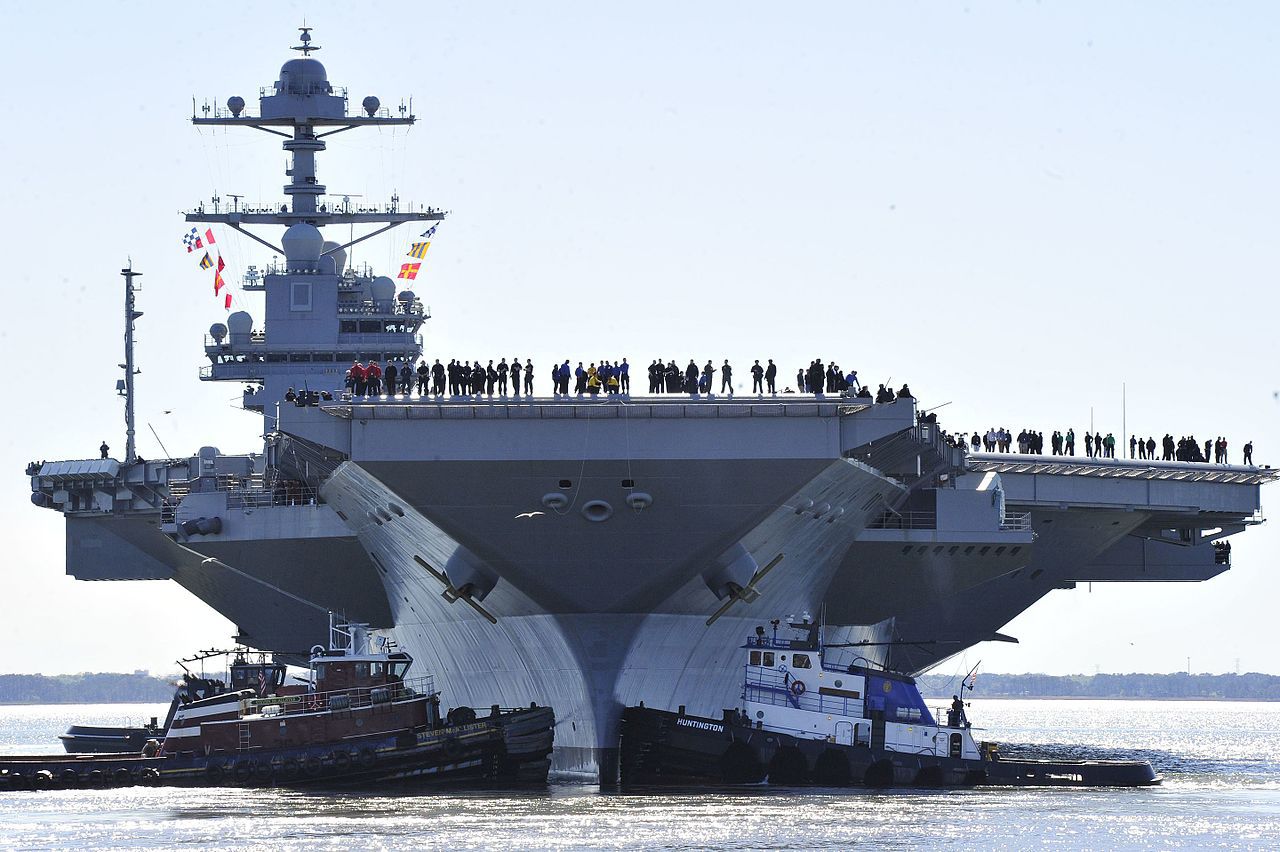By Ryan White
When building an aircraft carrier, you are constructing a floating, moving airport that generates its own power and provides everything necessary to sustain habitability for 5000 souls for weeks at a time at sea, in all kinds of weather. An aircraft carrier is a (roughly) 350 yards long, 80 yards tall, 80 yards wide building made entirely of hardened metal.
It really does not compare with building an airport because, while both have planes taking off and landing, the similarities end there. It does not compare with building a skyscraper with similar square footage because each level is different in size, design, and function from the one above and below it. Both an airport and a skyscraper take years to build and bring to full functionality. Yet an aircraft carrier must do so much more than either.
In short, you are trying to build an airport, a nuclear power station and an extended-stay hotel for more than 5000 people, plus the restaurants, shops and medical facilities to keep them fed, happy and healthy for months at a time – then put all that on an island, with engines capable of pushing it to 33 knots or more despite weighing ~ 100 000 tonnes.
Normally it could take five to seven years unless it takes ten to twelve. Why the disparity? If you are designing a new class of carrier, it will take much longer than if you are building follow-on ships to the first in class.
Aircraft Carrier USS Gerald R. Ford (CVN 78) under construction . (U.S. Navy photo)
The length of time to build an aircraft carrier depends on some factors. Here are some of these factors:
New Design and Equipment
The required time to build it will be much longer for the new designs. The new design may require new equipment, a new setup, and a new method of construction. It will also take much longer if the new design of the aircraft carrier calls for the integration of new equipment. The new ship generally requires customized equipment and parts. This will lengthen the time of its completion. Examples: The Ford-class has a completely new catapult, that works on electromagnetic principles instead of steam, and arresting gear that uses a water-based turbine arresting gear. Both new systems had to be invented from scratch, and they were troublesome. There were no real civilian cognates from which to develop these systems. The only thing close to the catapult would be a linear induction motor, but those are not really very close cousins.
Modifications
New technological developments during the shipbuilding period and government’s new demands will take the shipbuilder more time to complete its construction.
The 3 Phases of Building an Aircraft Carrier
An aircraft carrier, or any ship for that matter, is built in three general phases or steps.
- The first phase is the laying down of the ship. This phase involves the placing of the first parts of the keel on the dry dock or the slipway of the shipyard.
- The Second Phase Is the Launching of the Ship. In shipbuilding, launching is the process of transferring a ship to the water.
- The third phase is the commissioning of the ship. This is when the ship is officially put into active service.
An aircraft carrier undergoes many harbor and sea trials before it is commissioned for service. All of these processes impact the time it is ready to serve its purpose.
The latest aircraft carrier that was commissioned in the US Navy is the USS Gerald R. Ford (CVN-78). It underwent the whole process for 8 years because it had to incorporate newer technology. The ship was laid down in November 2009. October 2013 was when it was launched. It was finally commissioned in May 2017.




